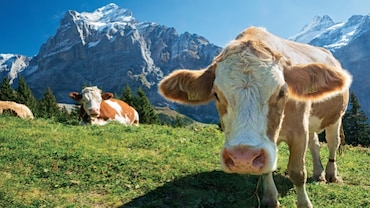- HOME
- /
- Features
- /
- Cover Story
- /
India On A Platter: The Best And Most Popular Dishes From North-East India
Here, a list of foods picked by our jury and winners of the open survey
 Assam's beloved masor tenga
Assam's beloved masor tenga
Arunachal Pradesh
Dung Po and Kholam: Dung po and kholam both celebrate the staple cereal rice. For dung po, rice packed in leaves is placed in two brass utensils, arranged to serve as a double boiler, steamed and served leaf-wrapped. With kholam, the rice is cooked in the hollow of a bamboo tube and buried in the dying embers of a fire, which lends the rice a distinct smoky flavour. The bamboo tube is then carefully hacked to reveal a cylinder of rice. This method of cooking sticky rice is also practised in Assam, where it is called sunga bhaat.
Popular Choice: Dung Po and Kholam
Assam
Masor Tenga: Perfect for the humid Assamese summer, masor tenga means tangy fish curry. Prepared with river fish, sour notes singing through it, masor tenga makes for a delightful summer lunch. Mildly spiced and eaten with rice, this preparation is light and refreshing on the palate. Some of the souring agents used are tomatoes, outenga (elephant apple), thekera (mangosteen) and the kazi nemu (a variant of lemon). Every Assamese home has a cherished recipe for this dish.
Popular Choice: Masor Tenga
Manipur
Singju: Think of a spicy salad bursting with flavour, tossed up with green leafy vegetables, crunchy lotus stems or thinly sliced raw papaya, combined with a dry, ground dressing made of thoiding (perilla seeds), ground-roasted yellow peas and seasonings. This is no boring salad—the non-vege-tarian variant includes ngari or fermented fish. Eaten as an accompaniment to meals or an evening snack in homes, it is widely sold in small eateries across Manipur. Singju is now available in several variants, one of which is Wai-Wai singju that includes the very popular instant noodles.
Popular Choice: Eromba
Meghalaya
Doh-neiiong: Doh-neiiong, from lush, scenic Meghalaya is a rich, mouth-watering delight. Derived from doh (meat) and neiiong (sesame seeds), this meal traditionally belongs to the Jaintias, one of the three major matrilineal tribes of Meghalaya, the other two being Garo and Khasi. Both Khasis and Jaintias make liberal use of black sesame seeds in their food. The sesame, which lends this dish a nutty flavour, is slow roasted and ground to a paste, then added to the meat, lending the dish its almost velvety, dark green colour.
Popular Choice: Jadoh
Mizoram
Bai: A delicately spiced, flavourful stew, bai is served at home, as well as in feasts. A slow-cooked, no-oil dish, bai is made by dunking beans, mustard leaves, cauliflower, cabbage, pumpkin leaves into a pot of boiling water and seasoned with meat. Like most tribal cuisines, Mizo cooking reflected the socio-economic disparity of the people of these remote areas. Meat being a luxury, bai was made with boiled vegetables, no salt and su-am (preserved pork lard), then cooked in a pot. Some recipes now use potatoes or rice to thicken the stew.
Popular Choice: Bai
Nagaland
Smoked Pork with Akhuni: A carnivore’s delight, it is bound to singe your olfactory senses, but we suggest you brace up and dig in. It is prepared with meat that has hung over an open hearth for a few days, and smoked to perfection along with akhuni—fermented soya bean—that lends its umami flavour and sharp smell. They are cooked together, until the fat is rendered and the moisture evaporated. Akhuni was originally made by Nagaland’s Sema tribe and has a flavour similar to the Japanese natto. This ingredient boasts legions of fans across India’s north-east region.
Popular Choice: Smoked Pork with Akhuni
Sikkim
Momo: This dumpling’s leap to street-food stardom is undisputed now. Doughy parcels filled with various meats and steamed, momos have been traced back to Tibet. In 1928, Charles Alfred Bell, British India’s ambassador to Tibet, and among the first Tibetologists, noted that the locals ate “10 or 15 small meat dumplings” for lunch. From the highlands of Lhasa, momos travelled to Nepal with Newari traders, who brought the momo to wherever they settled in India—Darjeeling, Kalimpong, Gangtok. In the 1960s, when Tibetans were forced to flee their land and scatter across India, the momo found a new home.
Popular Choice: Momo
 Juicy, steamed momos
Juicy, steamed momos
Tripura
Wahan Mosdeng: Wahan Mosdeng is built on the meat for all seasons in north-east India—pork. Crafted with shredded or thinly sliced pork, mixed in with coriander, onions and a generous amount of paste of char-grilled green chilies, Wahan Mosdeng is a much-loved side for a Tripuri meal. Containing no dry spices or extra oil, the gorgeous pork fat rendered from the meat is what gives it its delicious flavour.
Popular Choice: Chakhwi
 Wahan Mosdeng
Wahan Mosdeng






